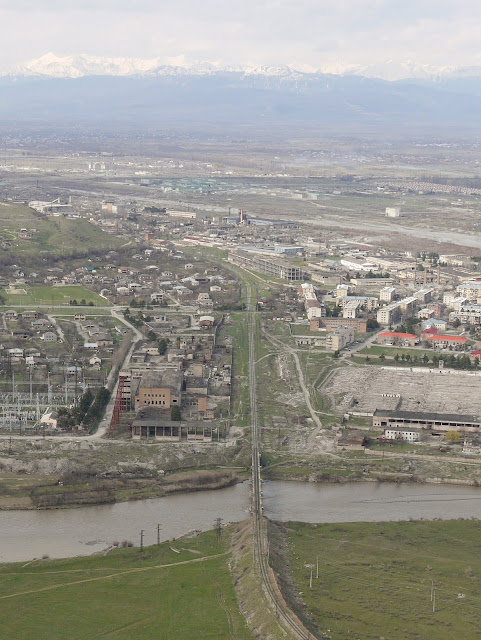
Joseph Stalin was born here in 1878, which is why the main road is still called Stalin Avenue. There is also a Stalin museum, an amazing place full of photographs, dust and old documents. Apparently, the museum never changed since it was opened some day in the 1950s, although the guide told me that the government in Tbilisi is now threatening to close it down (they already removed the city's Stalin statue in June 2010).
When I was there in April 2011, the town was very quiet and peaceful. You could still smell the snow, but children were already playing in the sun. I very much liked the old streets:

 From the market, you could walk up to the old fortress. This is a view through the fortress gates down into town.
From the market, you could walk up to the old fortress. This is a view through the fortress gates down into town.Due to its strategic position on the main highway going from west to east, Gori has always been an important military stronghold. Many armies passed by its fortress, the last one being the Russian in August 2008. During the South Ossetian war (South Ossetia is just a couple of kilometers to the north), Russian troops shelled the city, before occupying it for 10 days.
A number of movies have been made about the war, financed respectively by the Georgian and Russian governements. While the Georgian 5 Days in August (2011) blames the Russians for starting the war, the Russian Olympus Inferno (2008) and the only recently released August Eighth (2012) say it was the Georgians' fault. Although I found all movies somehow equally stuffed with propaganda, in August Eighth you have at least a weird robot appearing all of a sudden, and one of the songs in the soundtrack is nice.
 Crossing the Mtkvari river, one can clim up to a small church high above the valley.
Crossing the Mtkvari river, one can clim up to a small church high above the valley. There was an old cemetery, and a couple of cows were standing around. The tombstones in the cemetery had inscriptions that looked very ancient:
Walking back down, one had a nice view of the valley and the railway bridge.







